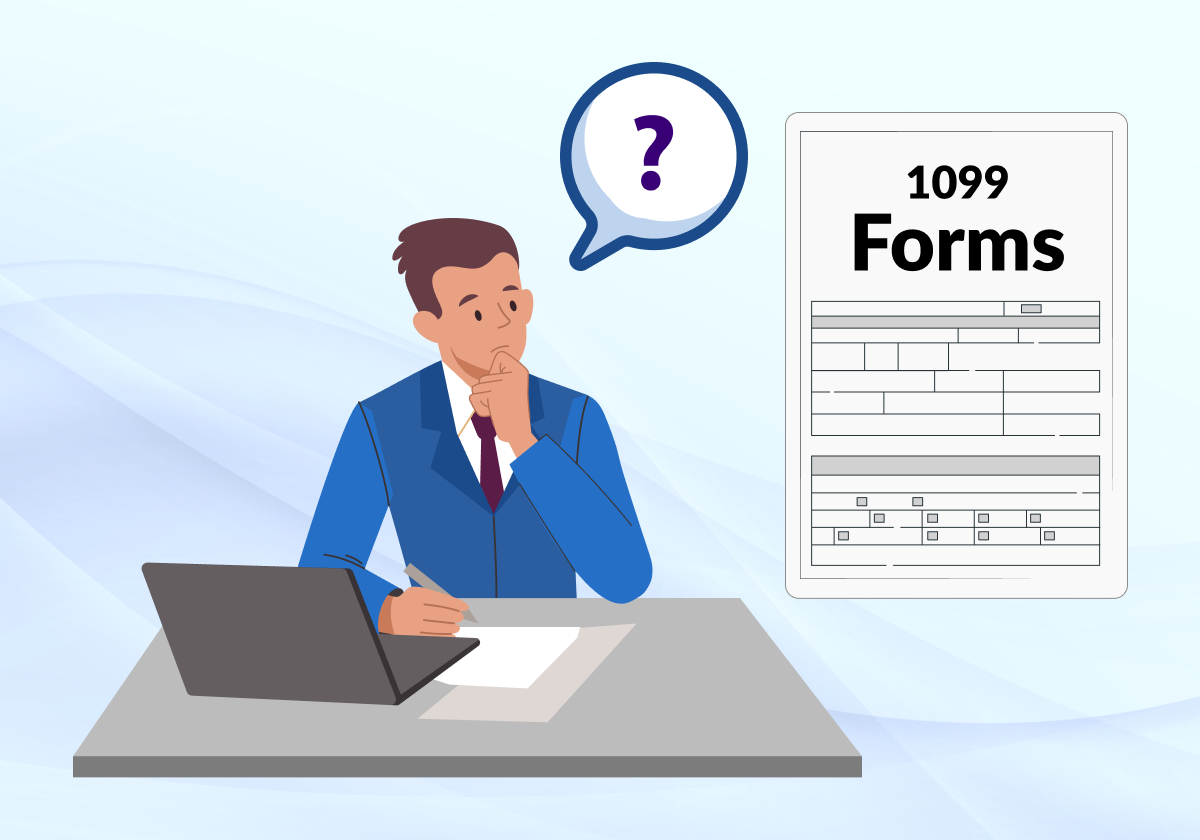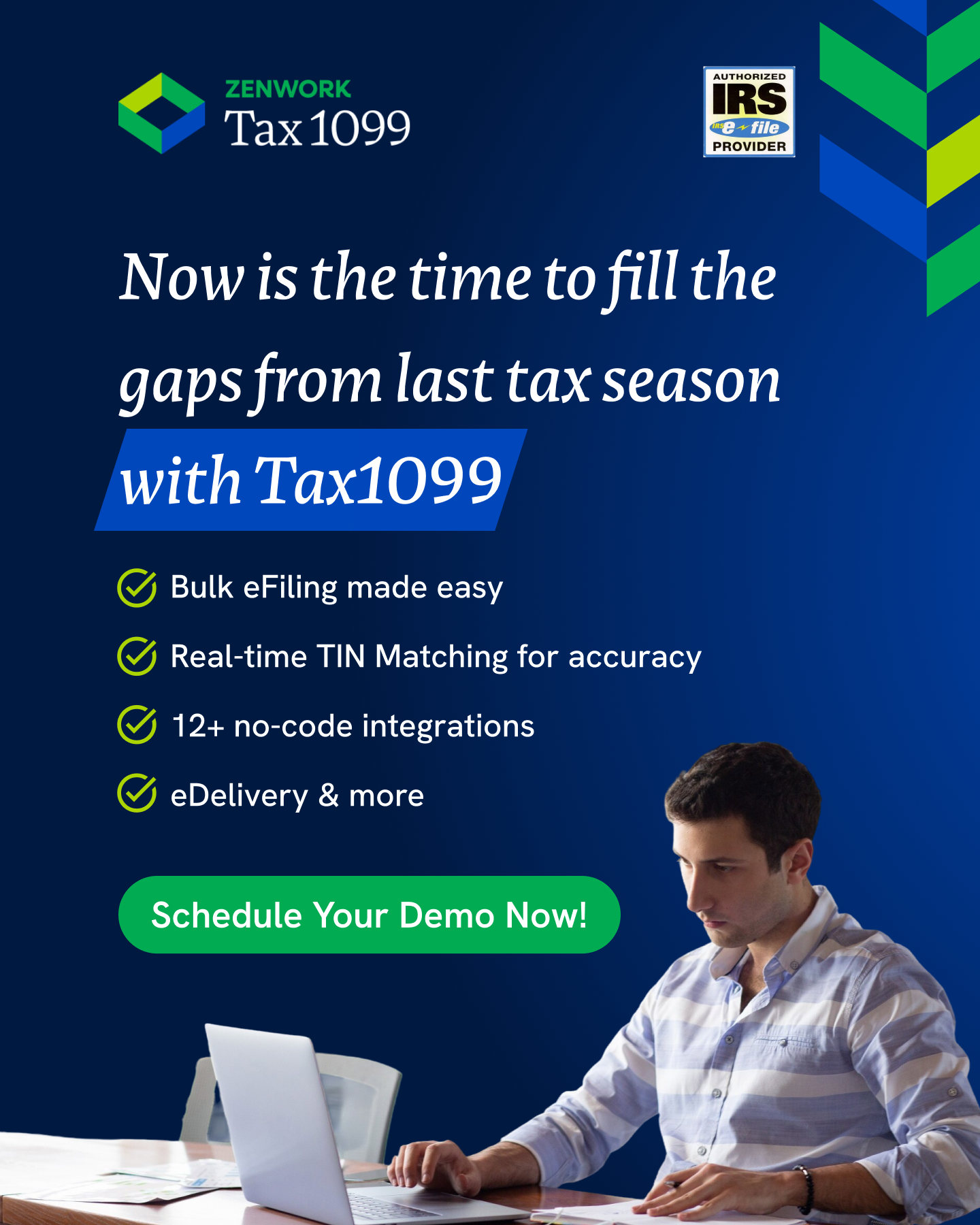As a business owner or contractor, knowing when you’re supposed to issue a 1099 form is crucial. It’s not just about tracking your payments; it’s about following IRS rules.
You’re required to issue a 1099 if you’ve paid someone more than $600 for services, rent, prizes, or other income types. Each form type can have its own reporting threshold, and it is important to know what each one is. The IRS uses these forms to track the money others make and ensure everyone pays their fair share of taxes.
Not getting this right might mean facing IRS penalties. That’s why understanding when you need to send a 1099 is so important. This guide will walk you through the rules and help you avoid any issues come tax time.
Understanding The 1099 Forms
A 1099 form is an IRS document used to report various types of income received throughout the year. Individuals and businesses must understand these forms as they represent income beyond traditional wages or salaries.
There are several types of 1099 forms, each designated for specific sources of income. Some common types include:
- 1099-MISC: Used to report payments made to freelancers, independent contractors, or individuals who have provided services amounting to $600 or more in a year. It also includes rent, royalties, and other miscellaneous income.
- 1099-INT: Issued by banks or financial institutions to report interest income earned on accounts like savings, checking, or investment accounts.
- 1099-K: Used by payment settlement entities, like credit card companies or third-party payment networks, to report payment card transactions or third-party network transactions. Generally used for businesses that exceed a certain threshold of transactions.
- 1099-NEC: Reintroduced in 2020, this form is specifically for reporting nonemployee compensation, replacing the previous use of Box 7 on the 1099-MISC form. It’s used to report payments of $600 or more made to independent contractors or freelancers for services rendered.
Who Needs to File and Receive 1099 Forms?
Businesses, employers, and financial institutions are responsible for issuing 1099 forms to individuals or entities who have received payments or earned income exceeding $600 during the tax year. On the receiving end, individuals or entities who have received such payments need to report them on their tax returns, ensuring accurate income reporting to the IRS.
When Are You Required to Issue a 1099?
Thresholds and Criteria
Thresholds: Understanding when to issue a 1099 form involves specific income thresholds. Generally, if you’ve paid an individual or entity $600 or more in a year for services, rents, royalties, or other types of income, you’re required to issue a 1099-NEC or 1099-MISC. You should review the specifics for other form types to be certain.
Specific Criteria: Several other scenarios trigger the need for a 1099. For example, if you withheld taxes on a payment that is typically required to be submitted and flied on a 1099 form. Other reasons include payments made to freelancers, independent contractors, or service providers for work done during the year. Additionally, rents paid for properties, royalty payments, and various other types of income might require a 1099 if they surpass the $600 threshold.
Examples and Explanations: To clarify, consider a scenario where a small business hires an independent contractor to provide IT services, paying them $800 throughout the year. In this case, the business is required to issue a 1099-NEC to the contractor. Similarly, if a taxpayer pays over $600 in rent to an individual, a 1099-MISC might be necessary to report that income to the IRS.
1099 Rules for Employers
Employers must accurately gather information from vendors, contractors, or individuals they’ve paid throughout the year and issue the appropriate 1099 forms. This includes potentially obtaining W-9 forms from recipients to ensure correct identification and tax reporting.
Failing to comply with IRS regulations regarding 1099 filings can result in penalties. This is covered here in detail.
How to Send Someone a 1099: Step-by-Step Guide
Step 1: Gather Information
Begin by collecting essential information from the individual or entity you’ve paid. Ensure you have their correct name, address, and taxpayer identification number (TIN). Use Form W-9 to gather this information before making payments that exceed $600 in a tax year.
Step 2: Determine the Correct Form
Choose the appropriate 1099 form based on the type of payment made. For example:
- Use Form 1099-NEC for reporting nonemployee compensation.
- Use Form 1099-MISC for various types of miscellaneous income like rent, royalties, or other payments.
Step 3: Fill Out the Form
Carefully fill out the chosen 1099 form with accurate information. Include the recipient’s name, address, TIN, the total amount paid during the year, and the payment’s purpose in the respective boxes.
Step 4: File Copy A with the IRS
Send Copy A of the completed 1099 form along with Form 1096 (Annual Summary and Transmittal of U.S. Information Returns) to the IRS by the designated deadline. For electronic filing, use the IRS’s FIRE (Filing Information Returns Electronically) system or use a certified e-filing service.
Step 5: Provide Copy B to the Recipient
Furnish Copy B of the completed 1099 form to the recipient by the specified deadline. Ensure the recipient receives this form, as they need it for their tax filing.
Step 6: Retain Copy C for Your Records
Keep Copy C of the 1099 form for your records. This is crucial for tax documentation and potential IRS inquiries or audits.
Step 7: Consider Electronic Filing
Electronic filing of 1099 forms is encouraged by the IRS for its convenience, accuracy, and speed. Use the IRS’s e-filing system or trusted tax software to submit these forms electronically.
By following these steps, you can accurately prepare and send a 1099 form to report payments made to an individual or entity, ensuring compliance with IRS regulations and facilitating smooth tax reporting for both parties involved.
Conclusion
Navigating the landscape of tax obligations, especially when it comes to issuing 1099 forms, demands precision and understanding. Correctly identifying when and how to issue these forms is paramount, ensuring compliance with IRS regulations and avoiding potential penalties.
As tax season approaches, simplifying this process becomes urgent. Enter Tax1099— now featuring its newly launched AI copilot. This intelligent AI assistant is trained to assist you in tackling any and every tax-related issue you may face. Catering to businesses of all sizes, as well as CPAs and practitioners, this tool is meticulously designed to efficiently address queries pertaining to 1099, 94x, and W2 forms.
Tax1099 is an invaluable tool designed to streamline your tax filing journey. With its intuitive interface and efficient features, the platform empowers users to effortlessly generate, file, and distribute 1099 forms, transforming what can be a complex and time-consuming task into a seamless experience.
Consider Tax1099 as your ally in navigating the intricacies of tax compliance—simplify your tax reporting and stay ahead in the game with Tax1099 at your side.



